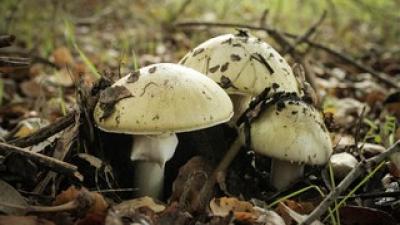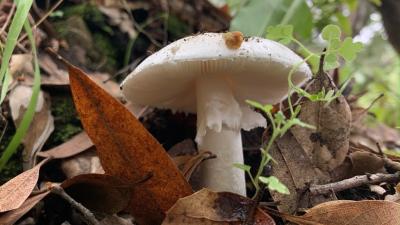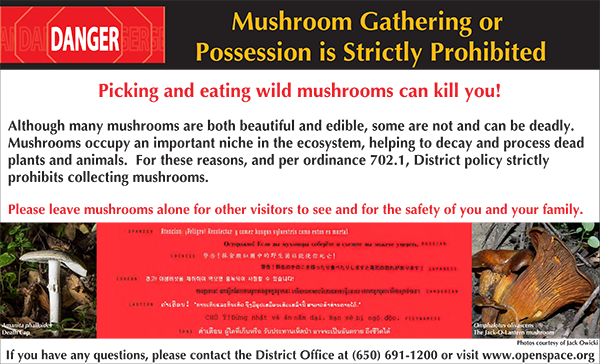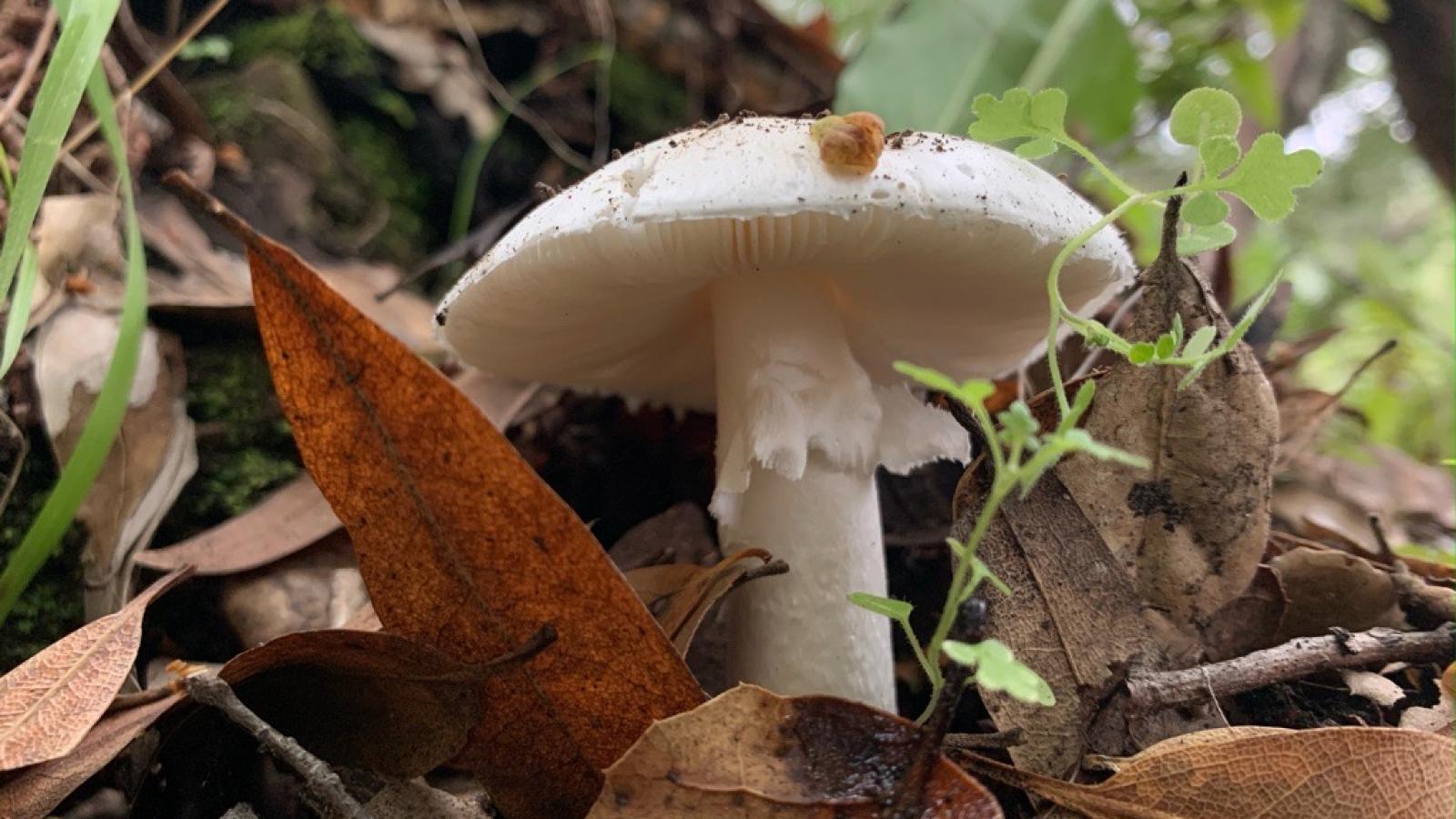The Bay Area is home to two of the world’s most toxic mushrooms – the death cap (Amanita phalloides) and the western destroying angel (Amanita ocreata). Both grow near oak trees and contain lethal toxins.
The Death Cap (Amanita phalloides)
The death cap (Amanita phalloides) is an infamous mushroom with a terrifying name. This mushroom, though strikingly beautiful, is the number one cause of fatal mushroom poisonings worldwide. The death cap is a medium to large mushroom that typically has a greenish-gray cap, white gills, a white ring around the stem, and a large white sac at the base of the stem.
Amanita phalloides is originally from Eurasia, but was accidentally introduced to Central California in the 1930s, likely as a hitchhiker on the roots of a European cork oak (Quercus suber). Like many other mushroom species, death caps live in association with oak trees in what’s called a “mycorrhizal relationship.” Recently, it has also been found growing in association with other species of hardwood trees.
It fruits starting in late fall, usually right after the first rains. Though the death cap is mainly associated with oak trees, it has been found growing with other hardwoods. It was accidentally introduced to North America on the roots of European cork oaks, and is now slowly colonizing the West Coast.

The Western Destroying Angel (Amanita ocreata)
The western destroying angel is a medium to large mushroom that usually has a creamy white cap, white gills, a white ring around the stem and a thin white sac at the base. It fruits from late winter into spring, and is associated exclusively with oak trees. Unlike the death cap, it is a native California mushroom.

More on Mushroom Toxins
The introduced death cap mushroom, along with its native Californian cousin the western destroying angel mushroom, contains amatoxins, which cause cell death and are very difficult for the human body to eliminate. These toxins also cannot be eliminated by cooking the mushroom and will cause kidney and liver damage 10-24 hours after they are ingested. These toxins are only harmful if ingested, so never fear, standing next to one of these mushrooms or even touching them will not harm you!
While these two species are responsible for most cases of mushroom poisonings in California, deadly amatoxins can be found in Galerina and Lepiota species as well, both of which occur in the Bay Area and can resemble edible mushroom species.


